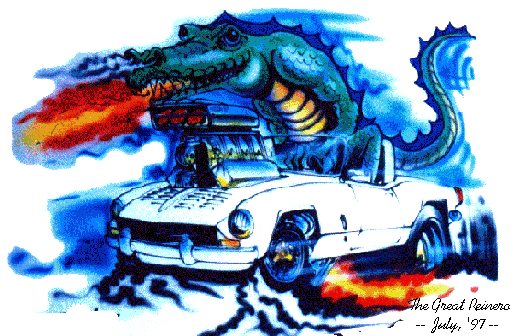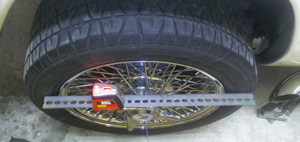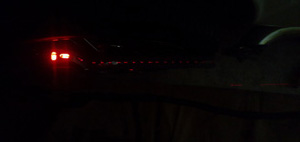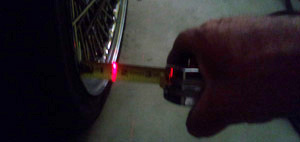- Introduction
- Required Exhaust Changes
- Other Required Changes?
- Half-Shaft & Spring Mod.s
- Disassembly of the Suspension
- Trailing Arm Bracket Install
- Reassembling the Suspension
- Installing AFCO Shocks
- Disc Brake Conversion
- Aligning the Rear Wheels
- Final Analysis - Road Tests
- Initial Suspension Installation



The intent of this exercise is to make sure the car is drivable to the alignment shop.
Step one - The rear wheels were set to vertical - zero camber - a long level was employed to check the amount of adjustment as the radius struts were adjusted. In between adjustments, I rolled the car back 10 feet and then forward 10 feet to ensure that the suspension settled in to the adjustment.
Step two - The wheel's toe alignment was set to zero. The toe is set by adjusting the ends of the trailing arms. The new design of the trailing arm brackets made this easy. This adjustment was to make sure the plane of the wheel was parallel to the centerline of the car. To do this, a length of angle iron was secured to the rear wheel with a zip-tie - with wire wheels this is easy. The angle iron contacted the rear tire, not the wire wheel. The angle iron was adjusted level to the floor using a level - Photo 1.
Step three - A carpenters laser level with a mounting magnet was set on the angle iron. The laser level was turned on and aligned with the angle iron to assure that it was pointing parallel to the wheel - Photo 2.
 v
The steering wheel was turned such that the front tires were pointing
forward - unfortunately this is done visually. The garage lights were turned off and, using a tape
measure with its end against the wheel (not tire), the measurements where the laser hit the tape on both the rear and front of the wheel were recorded -
Photo 3. The trailing arm was adjusted with the alignment nut so that the two measurements were equal. Shims were then installed in the trailing arm bracket and the alignment nut and jam-nut were tightened. The angle iron was removed, rolled the car back and forth 10 feet and then
rechecked all measurements by replicating the full alignment procedure. The other wheel was
adjusted in a like manner.
v
The steering wheel was turned such that the front tires were pointing
forward - unfortunately this is done visually. The garage lights were turned off and, using a tape
measure with its end against the wheel (not tire), the measurements where the laser hit the tape on both the rear and front of the wheel were recorded -
Photo 3. The trailing arm was adjusted with the alignment nut so that the two measurements were equal. Shims were then installed in the trailing arm bracket and the alignment nut and jam-nut were tightened. The angle iron was removed, rolled the car back and forth 10 feet and then
rechecked all measurements by replicating the full alignment procedure. The other wheel was
adjusted in a like manner.
At the alignment shop, I was told that the toe alignment of both wheels were within actual tolerances - but they would make it perfect. The camber was also zero and they would play with the camber for cornering.
The garage alignment method was proved to be more than adequate.